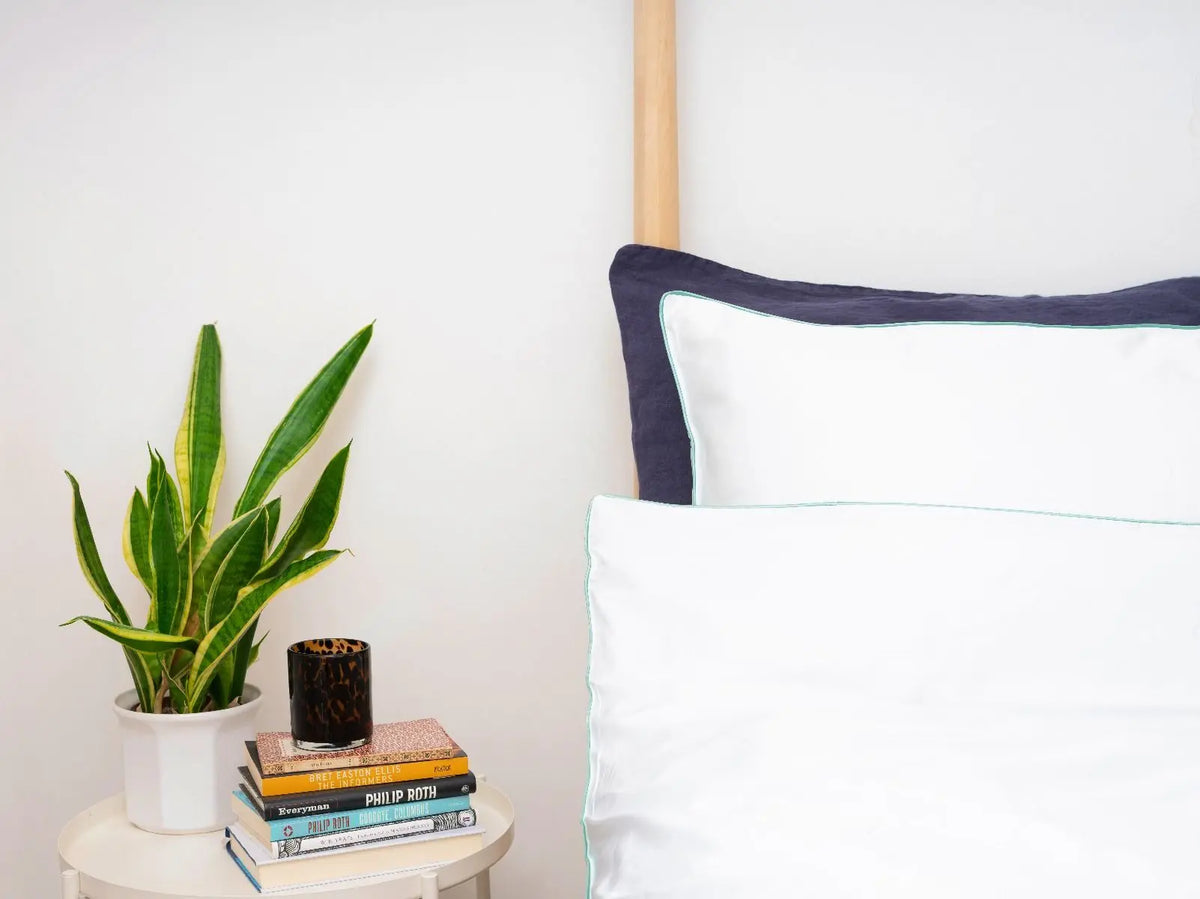
How to Make Your Bed More Environmentally Friendly
|
Time to read 4 min
This store requires javascript to be enabled for some features to work correctly.
Written by: Bethany Gemmell
|
Time to read 4 min
As we become more conscious of climate change, we begin to think more about the ways we consume. What we buy for our home and everyday use has a serious impact on the environment. We spend one third of our lives in bed, which means we buy a significant amount of products for sleeping. While we shop with the aim of comfort in mind for our bed, sustainability is more important than ever. The materials of our bedding especially make an impact on our consumption, and ultimately, the future of our planet. It is, however, difficult to try and be environmentally friendly when you don't know where to begin.
Our guide will allow you to learn about sustainable bedding materials and recommend more environmentally friendly products.
One of the most simple, yet effective, ways to become more sustainable is to choose bedding of bamboo material. Bamboo is a quickly regenerating plant, meaning that its use will not result in damage to wildlife. The plant also requires less of a third the water that cotton needs to grow, meaning it can be grown easily and in many environments, while cotton requires specific sunlight and conditions. Cotton's reliance on pesticides in mass production means that it contaminates water supplies and contributes to air pollution. This makes the material one of the world's biggest contributors to climate change, according to the WWF.
Making the swap from cotton to bamboo does not need to be a downgrade. In fact, bamboo can offer many solutions to the problems cotton provides. Ditching the pesticides required to grow cotton means that bamboo has many hypoallergenic qualities. Its moisture absorbency helps you to keep cool in the winter and warm in the summer. This temperature control protects you from overheating and skin breakouts.
Take Panda's range of bedding, for example. Panda uses South-east Asian bamboo that keeps its bedding as soft as Egyptian cotton, with greater temperature and skincare benefits. Their memory foam bedding also offer a vegan alternative to goose and duck feathers. Panda's ethical homeware offers a guilt-free alternative without sacrificing comfort, and a portion of their proceeds go to the WWF to help protect endangered pandas.
Alternatively, you do not need to rule out using cotton altogether to go green. While bamboo has many benefits, new ways of creating sustainable materials are constantly being created. The rising popularity of organic cotton means that cotton can be a guilt-free, environmentally friendly option. Organic cotton production involves working alongside natural growth cycles that ensure healthy growth without going into overproduction. This helps save water, as well as ensuring local farming areas have clean water for drinking and washing.
Organic cotton's biggest impact in saving the planet is its rejection of using pesticides. The harsh chemicals used in cotton overproduction, such as nitrogen fertilisers and artificial pesticides, cause serious harm to the environment. This can affect local water supplies and crops, harming the daily lives of farmers. Pesticides are also a serious pollutant, creating deadly fossil fuels that cause damage to the air and ocean.
Just like bamboo, organic cotton's rejection of harmful chemicals are better for bedding. Their natural origins make them hypoallergenic, and kinder to sensitive skin. This is a particularly important option when choosing bedding for children and babies, or those with allergies.
For better for your baby, Avery Row offer a range of organic cotton bedding kinder to young skin. The skin of babies and children are more sensitive and are more prone to allergic reaction. Switching to organic cotton is as kind to your baby as it is to the planet.
While shopping for environmentally friendly bedding, it may seem like there's a lot of jargon when looking for the perfect material. Finding the right material for comfort while also looking for sustainable bedding may be initially confusing. One word appearing more and more frequently while shopping may be Tencel™.
A new material on the sustainable living market, Tencel™ is an increasingly popular option in bedding production. Tencel™ branded lyocell and modal fibers are produced by environmentally responsible processes from the sustainably sourced natural raw material wood. Tencel™ fibers are found in many sustainable brands, and have begun to appear more and more in bedding.
These fibres use a sustainable closed loop production process, which transforms wood pulp into cellulosic fibres. This process recycles process water and reuses it at more than 99%. This means that, like bamboo and organic cotton, this process wastes far less water. Solvents used in its production are recovered and do not pollute the environment.
Tencel™'s use of eucalyptus plants is not only sustainable, but its use is highly beneficial for bedding. Its avoidance of chemicals creates a softer feel on skin, much like bamboo and organic materials. Its use of long fibres are not only soft to touch, but its water sustainability allows it to be moisture absorbent. This keeps the fabric breathable and temperature controlled, ideal in more extreme weather. The material is also less likely to wrinkle, helping you reduce your carbon footprint with less maintenance required.
Undercover's use of Tencel™, for example, blends organic cotton with this revolutionary material. This helps create lightweight bedding that’s soft and crisp in equal measure. Its durable material and moisture control ensures a great night's sleep all year round while helping to save the planet.
Receive 10% off your first order when you subscribe to our newsletter


